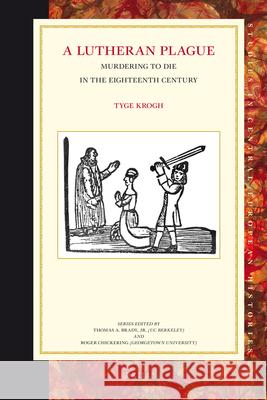A Lutheran Plague: Murdering to Die in the Eighteenth Century » książka
A Lutheran Plague: Murdering to Die in the Eighteenth Century
ISBN-13: 9789004221154 / Angielski / Twarda / 2011 / 226 str.
To kill someone purely in order to be sentenced to death and then to die at the hands of the executioner Such murders were alarmingly frequent in eighteenth-century Lutheran Europe. The book traces the complex motives behind these crimes - an investigation that leads not only to the Pietist interest in saving the souls of those sentenced to death but also into some of the central elements of Lutheran soteriology and the idea of capital punishment as being divinely ordained. The murders prompted special legislation and challenged the religious basis of the death penalty, and the killings and the logic behind them played an important role in debates about capital punishment, following Beccaria. Although much less frequent than in Lutheran Europe, such crimes are still committed elsewhere in eighteenth-century Europe, and even in the present-day US. Thus they seem to go hand in hand with the death penalty, irrespective of time and space. At draebe nogen alene for at blive dodsdomt og henrettet af bodelen . Sadanne mord var alarmerende hyppige i 1700-tallets lutherske Europa. Bogen eftersporer de komplekse motiver bag disse forbrydelser - en undersogelse der forer ikke bare til det pietistiske engagement i at frelse de dodsdomtes sjaele, men ogsa til centrale dele af den lutherske frelseforstaelse og til forestillingen om, at dodsstraffene var direkte beordrede af Gud. Bogen har selvmordsmordene i Kobenhavn og den danske stats bekaempelse af selvmordsmordene som udgangspunkt, men indeholder ogsa et europaeisk udblik. Mordene forte til saerlig lovgivning og udforderde de religiost motiverede dodsstraffe. Her blev Danmark foregangsland, da man i 1767 helt ekstraordinaert afskaffede dodsstraffen for disse mord. Om end meget sjaeldnere end i det lutherske Europa ses selvmordsmord ogsa i det ovrige Europa i 1700-tallet savel som i vore dages USA. De synes saledes at ledsage dodsstraffen overalt, hvor den er i brug.











